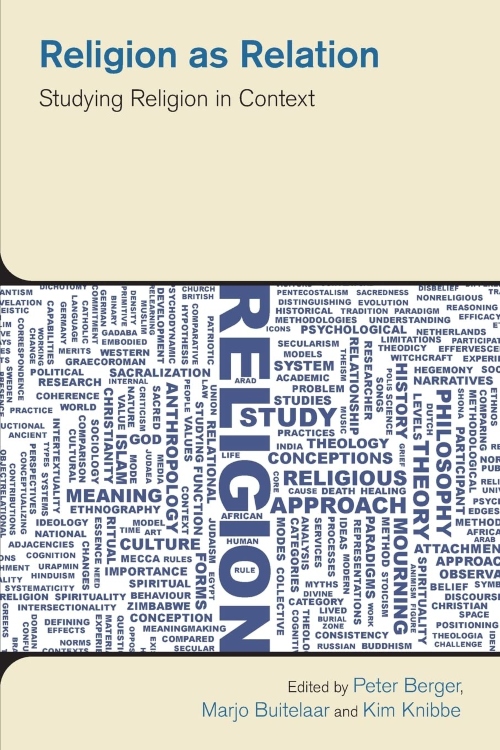Religion as Relation - Studying Religion in Context
Religion in relation to life, ‘lived religion’ as a complement to doctrine and dogma, rites and rituals
 Religion as Relation - Studying Religion in Context
Religion as Relation - Studying Religion in Context
Peter Berger (ed.), Marjo Buitelaar and Kim Knibbe,
Equinox, Sheffield
ISBN: 9781800500709
Reviewed by Alec Gilmore
First clear your mind of any idea that Religion and Christianity (Judaism, Islam and the rest) are two ways of describing the same thing. They are not. Think of ‘religion’ more as a generic term covering a variety of customs and ceremonies (mostly related to the unknown and the 'Beyond‘), for which ‘religions’ provide a variety of structures. So when a dozen scholars from secular disciplines whose undergraduate courses included the study of religion, it seemed appropriate to ask both teachers and students what they understood by the word — students, what they expected to hear, and teachers what they included in the package. Religion as Relation sums up their findings, highlighting one undervalued aspect, Religion as Relation.
Overall the emphasis focuses on what people do rather than what they believe, followed closely by recognition of that moment when ‘religion’ suddenly ‘bites’ and calls for a response. These moments are legion but with this particular group of contributors the examples inevitably fall in their territory (health and well-being, fatigue and depression, bereavement and loss, etc.) What matters is not the detail but the experience. This is religion in relation to life, ‘lived religion’ as a complement to doctrine and dogma, rites and rituals.
Just two examples. Geertje, in her late 20s, lost an illegitimate stillborn child and endured the wrath of a harsh family, bearing the burden alone. Every summer she went through an inexplicable bad patch (numb, listless, unable to get out of bed), enduring a sadness and loneliness she could share with nobody, until after well nigh 20 of such summers she wondered if it might it have something to do with the loss of her baby. As she described the incident to a counsellor she suddenly became ‘overwhelmed with emotions’ and spat out a melody which ‘had sprung to her mind and kept ringing in her head’. Her counsellor recognised it as a liturgical song and introduced her to a God who took care of people before they were born (Psalm 139:15-16). In her own words, Geertje’ had learned ‘how to be be sad in a safe environment.’
Nilgün, in a Mosque Group on a pilgrimage to Mecca, links up with an unnamed companion, also on a quest, suffering from a rocky marriage, children having flown the nest and even a good, well paid job failing to satisfy. ‘What was it all for?’ Nilgün, an early divorcee, having worked hard all her life to provide for her children, similarly found herself ‘staring into emptiness’ after the marriage of her eldest. Initially reluctant to any pilgrimage, the pull of Mecca became irresistible, but all she wanted was ‘to pray for the well-being of her children and to thank the Lord for the strength to raise them as a single mum.‘ For this ‘deeply religious woman’, cradled in Islamic belief and practices, religiosity was intertwined with ‘the simple complexities of everyday life’. For the other it was potentially the door to a new beginning. Lived Religion!
Highly specialist but any serious reader, prepared to take a chapter at a time, is more than likely to come across other examples of ‘lived religion’ crossing their path.
Alec Gilmore is a Baptist minister
Baptist Times, 19/05/2023